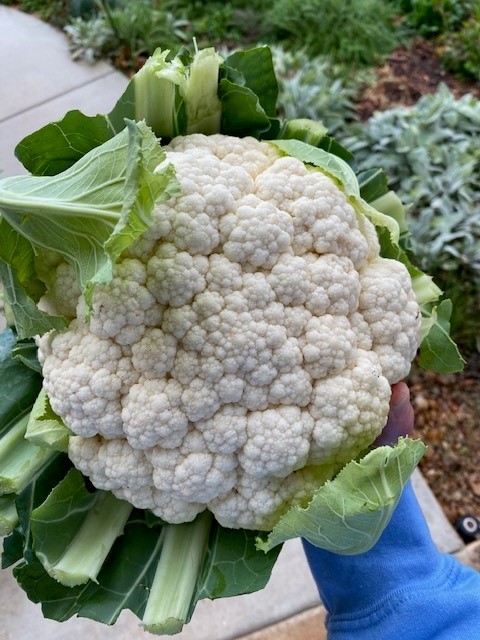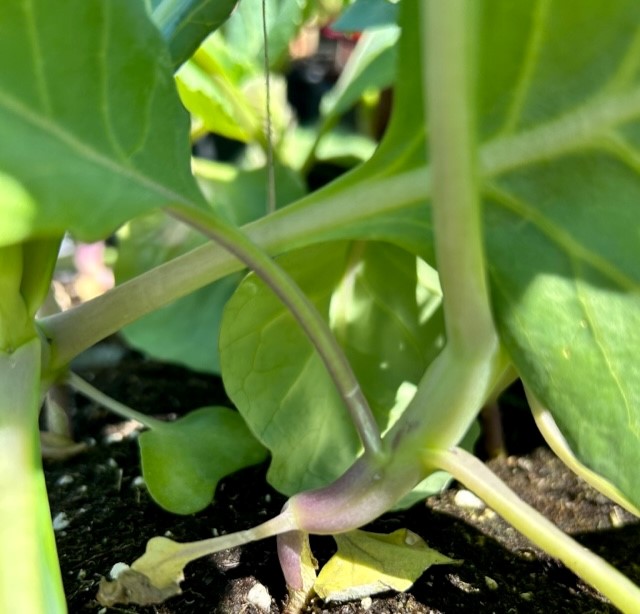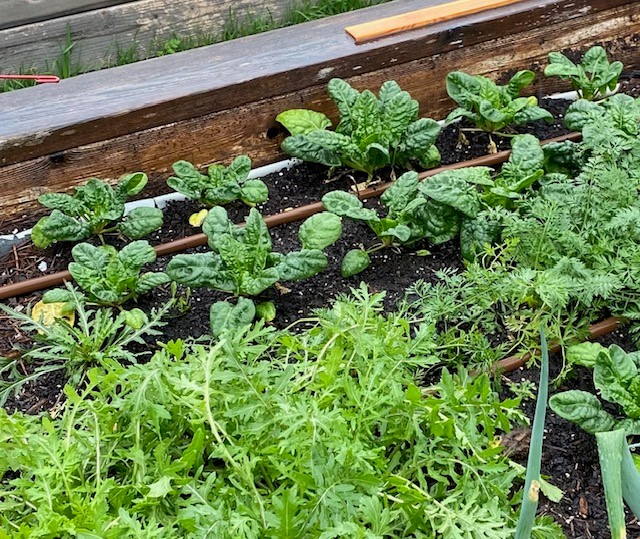Summary by Michelle Hobbs, Bexar County Master Gardener

October 2023
On Saturday, September 23rd at Milberger’s Landscaping and Nursery, David Rodriguez, Horticulturist, Texas A&M AgriLife Extension Service gave Part 2 of a presentation on growing a fall vegetable garden.
David covered the basics that are necessary for gardening success which can be reviewed here and focused on the vegetables that can be grown as we move towards the cooler temperatures of fall and hopefully more rain.
While we still have warm weather vegetables in the garden, it can be a bit of a challenge to find space for our cool weather vegetables. The cool weather vegetables include the cabbage family (cabbage, broccoli, cauliflower, kale, etc.), leafy green plants (lettuces, spinach, Asian greens, etc.), and root crops (carrots, beets, turnips, etc.). These plants thrive in the cooler temperatures of fall. Most can tolerate 4-6 hours of sunlight, but more sunlight is still better.
Here are some tips and information about some of the vegetables that we can grow in the fall:

Cabbage Family
It is inevitable that cabbage, broccoli, and cauliflower will end up with caterpillar damage unless preventative spray* is used. Affected plants will have small round holes in the leaves. This can be prevented by using two different products after planting, one each week for three weeks to prevent damage to the leaves, according to the following treatment schedule:
Week 1: Thoroughly spray leaves in the morning or evening with a product that contains liquid BT (Bacillus Thuringiensis).
Week 2: Thoroughly spray leaves with a product that contains Spinosad. This should be sprayed in the evening after the bees have left the garden as it can adversely affect these important pollinators.
Week 3: Repeat Week 1.
After the first 3 weeks, you may change to treating every 10 days alternating between the two products.
*Add a surfactant (such as a couple of drops of liquid soap) to the preventative spray mix to help the spray adhere to the leaves.

When planting broccoli, cauliflower, and cabbage, if you notice a purple stem (see photo) above the dirt level you can plant at the depth of the top of the purple area. All other plants should be planted at the same level in the garden as they appear in the pot.
For most of the members of the cabbage family (cauliflower, cabbage, broccoli) you will use plant transplants versus seeds. If you plant by the beginning of October, you should be able to harvest by Thanksgiving. Wait 30 days (around November 1) to plant a new crop so you may be able to harvest by Christmas.
When growing broccoli and after harvesting the main head, you can use extra fertilizer to encourage additional side shoots that will be available for a later harvest.
Root Crops and Leafy Greens

Wait to plant your root crops and leafy greens until October when the weather is cooler. These should be direct-seeded, but consider purchasing your seeds now to get the best availability. The cooler temperatures aid in germination. Root crops require very loose soil that is crumbly to leave little resistance for the underground growth. Spacing is important for root crops. For carrots, look for shorter variety carrots unless you have plenty of soil depth.
Onions
Onions can be started by direct-seed now, or you can pre-order onion sets from Dixondale Farms (located in Carrizo Springs, Texas) to plant around January. Dixondale Farms supplies approximately 90% of the onions in the US. The key for onion success is to make sure you grow short-day or neutral onions. Ensure proper fertilization and growing conditions to try to maximize the number of leaves grown as each leave equals a ring on the onion.
Strawberries
Strawberry plants can be planted now until November 1. There are several pests, such as pill bugs, that can ruin your strawberries. It is important to use Sluggo Plus to deter these pests. You will also want to use straw underneath the plants for the growing strawberries to rest on.

Peas
Peas can be planted via seeds in January. Some people also plant peas in November. This includes sugar snap, English, and snow peas. Seeds should be pre-soaked for approximately 2 hours prior to planting.
The varieties of peas that grow on a trellis tend to grow better in San Antonio than the bush types. Consider covering your peas with an insulating fabric (called n-sulate or grow-web) to help your peas survive frosts and the winds that occur during this time. English peas are highly susceptible to powdery mildew so it important to preventively treat the plants with a fungicide (containing Daconil) during times of wet weather and humid conditions.
Seed tips

Some fall vegetable seeds tend to be very small. These small seeds make it even more important to have very well-prepared soil that is moist prior to adding the seeds.
Make very shallow furrows to plant your seeds, and consider purchasing a seeder that has a small tip that can assist with spacing. Don’t start direct watering until the seed germinates as they are so small and easily disturbed.
Once the seedlings emerge, gently water on the sides of the new plants since they are fragile. Once germinated, you will likely need to do some thinning. You will want to cut the extras instead of pulling so you don’t disturb the other plant roots.
Fall is a great time of year to plant. Consider experimenting and growing some new or different varieties of vegetables this year. Happy planting!
Helpful resources suggested by David Rodriguez:
Dr. Sam Cotner “The Texas Vegetable Book”
Aggie Horticulture: Texas Home Vegetable Gardening Guide
Youtube.com: MyExtension 210
Photos by author
